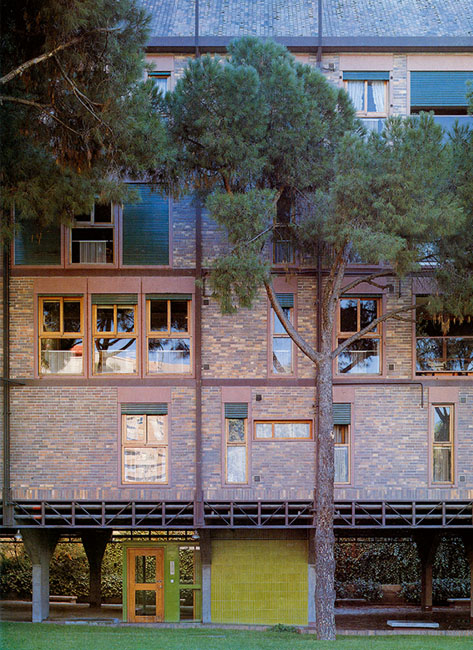Calle de Arturo Soria Madrid
Bayon, Aroca, Bisquert y Martin
Samenvatting
De Madrileense architect/constructeur Ricardo Aroca realiseerde in de jaren 1970 een aantal bijzondere wooncomplexen. Uitgangspunt was de idee van een verticale stellingkast waarin onafhankelijk van elkaar op maat gemaakte woningen geplaatst konden worden. Elke bouwlaag moest een vrij vloerveld bieden waar elke indeling mogelijk was. Hiertoe ontwikkelende Aroca een doorsnede waar een betonnen tafelconstructie een open maaiveld overspant. Op de tafel staat een staalskelet met vier tot vijf vloervelden boven elkaar.
Het gebouwencomplex Arturo Soria is, samen met het nabij gelegen project aan de Calle de Angel Munoz, te zien als een radicale, compromisloze uitwerking van de uitgangspunten van Aroca. Het vormt daarmee een van de mooiste voorbeelden van het principe van drager en inbouw in de woningbouw zoals John Habraken het begin jaren 1960 formuleerde. Arturo Soria bestaat uit drie bouwvolumes waarin woningen en kantoren zijn vermengd. Het middelste gebouw maakt een knik om een aantal grote dennen te sparen. De kop van dit gebouw bevat een aantal vrij indeelbare kantoorruimten; de staart – prachtig gelegen tussen de dennen – bevat appartementen die via twee stijgpunten bereikt worden. Het project werd ontworpen en gebouwd voor een coöperatief van opdrachtgevers. De in maat en indeling sterk variërende woningen werden ontworpen op basis van de wensen van de toekomstige bewoners.



